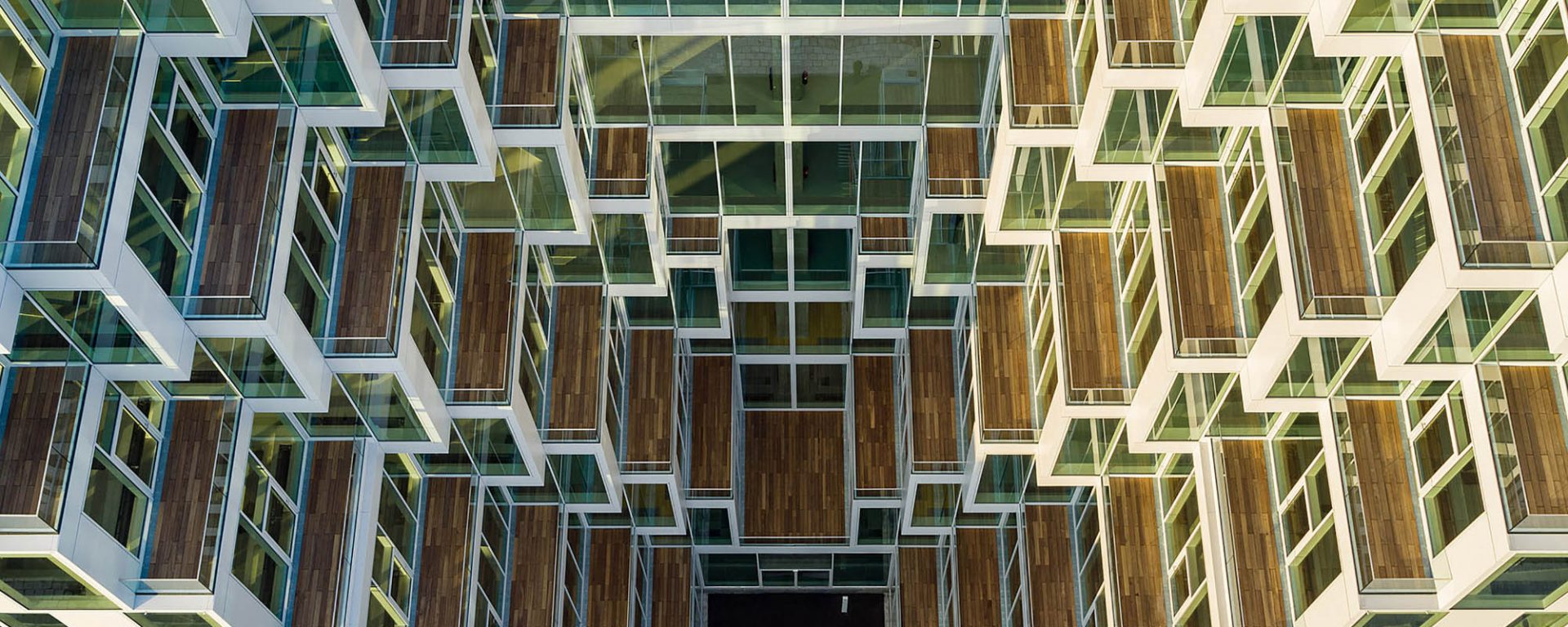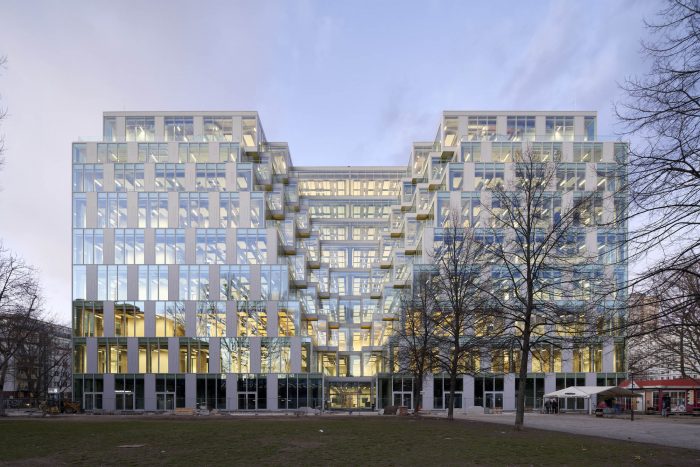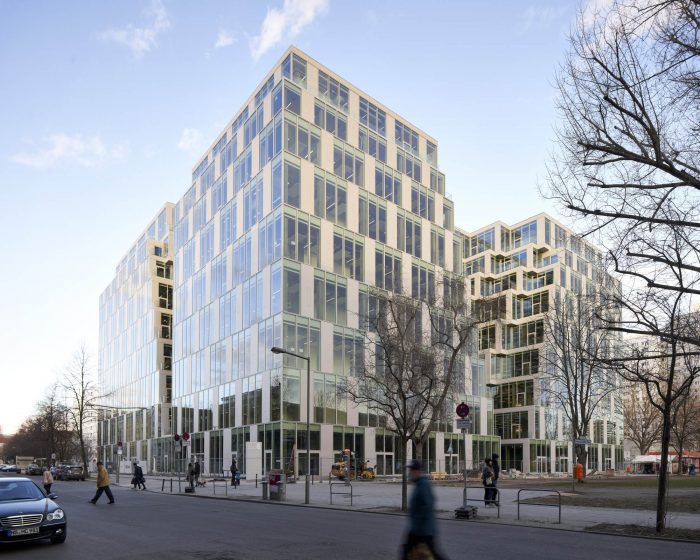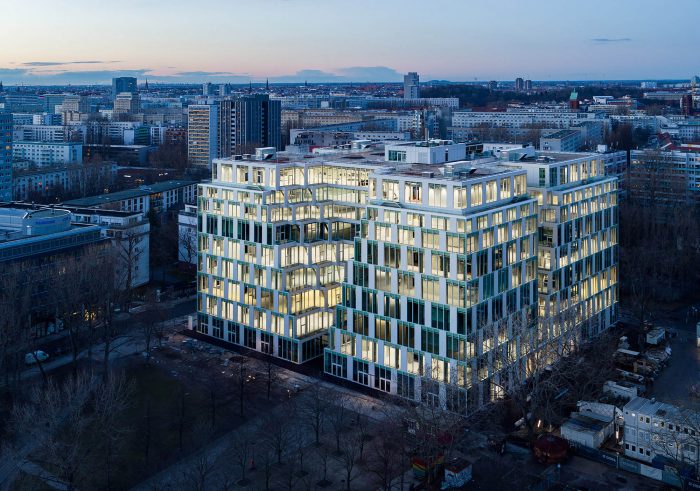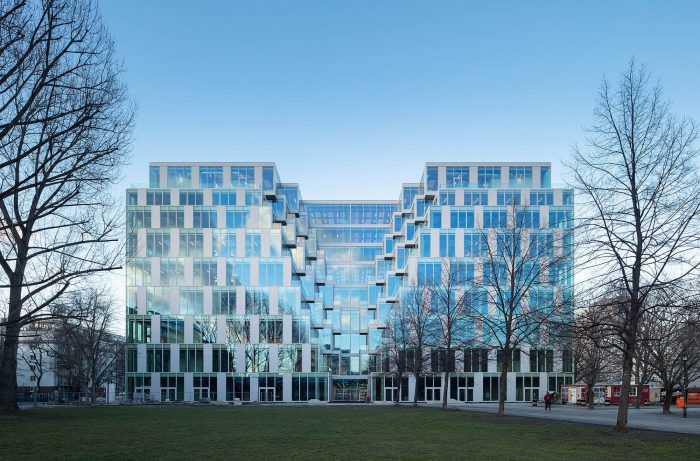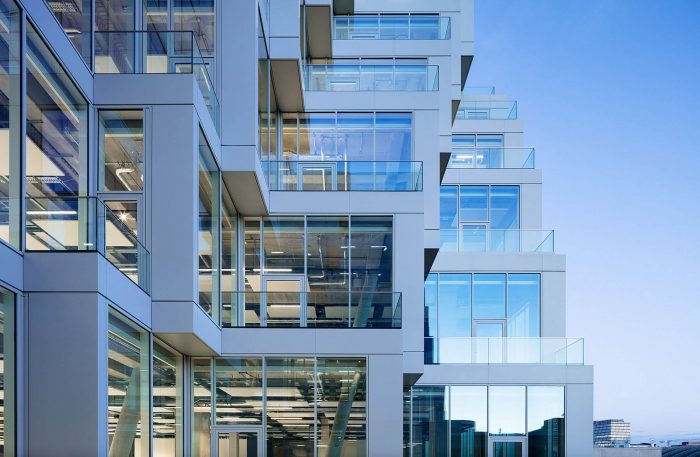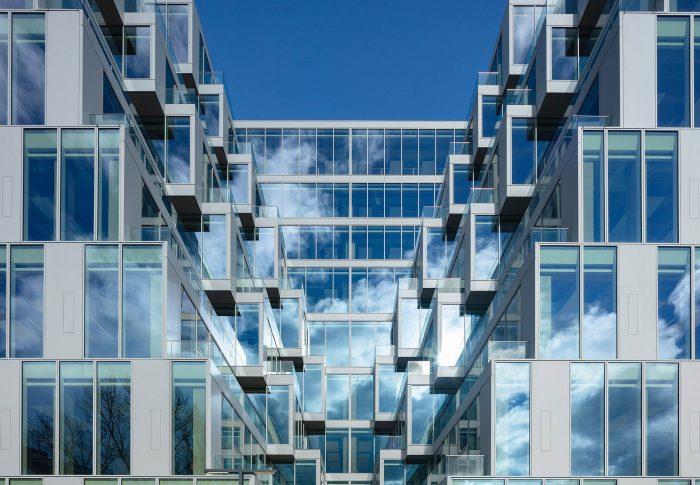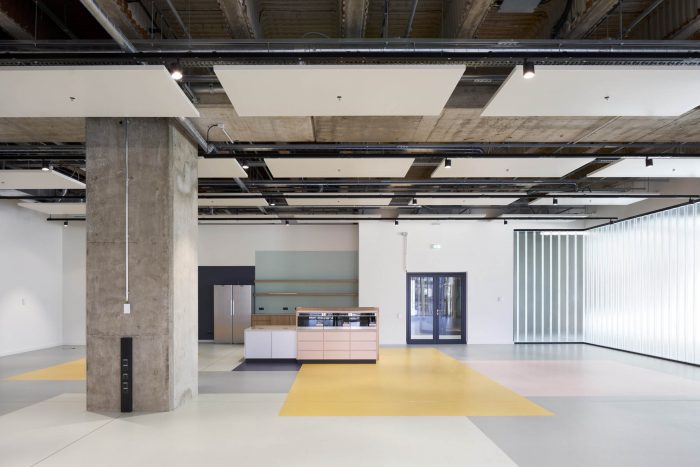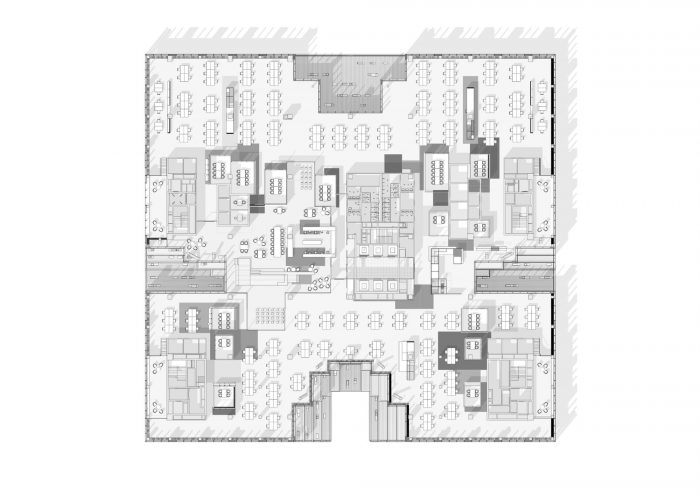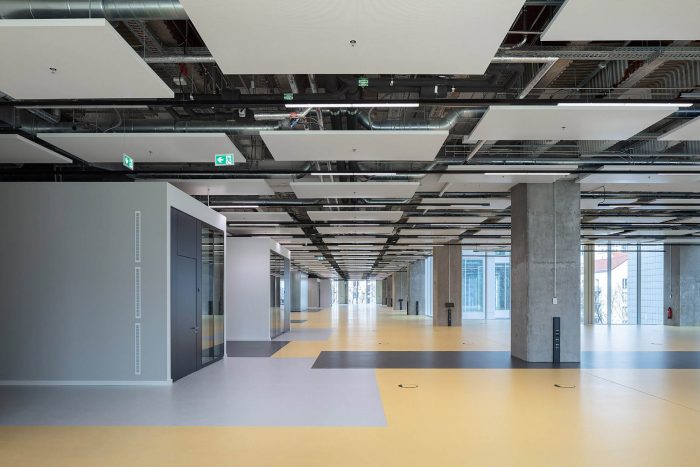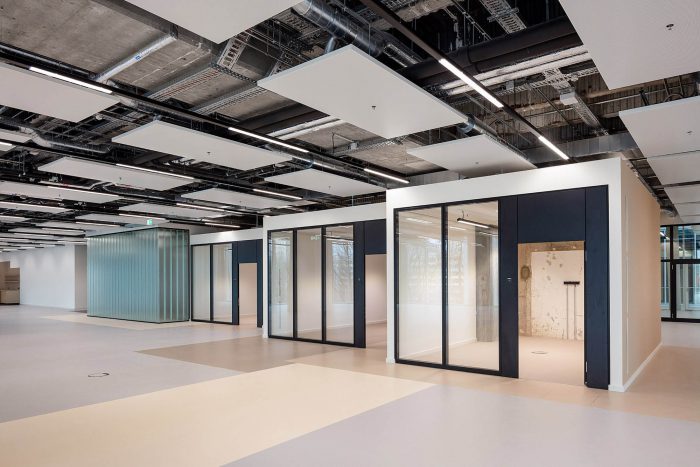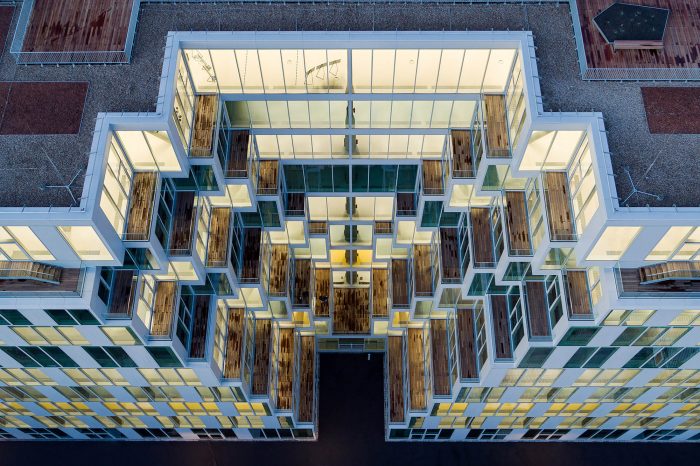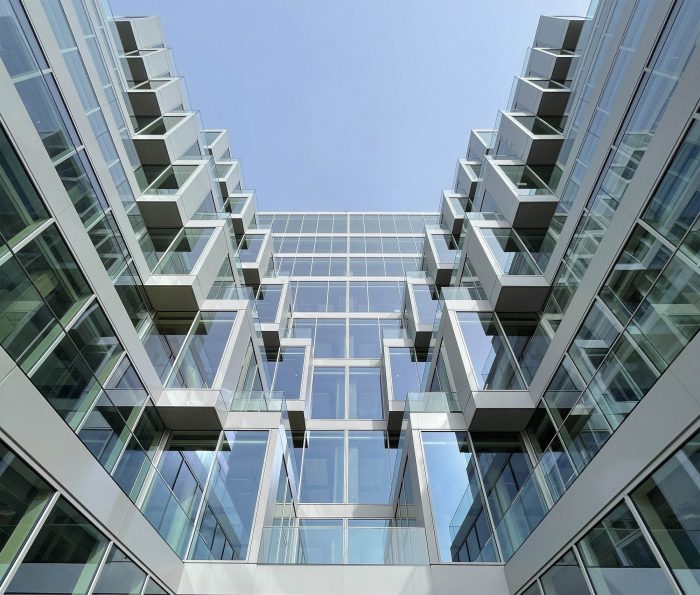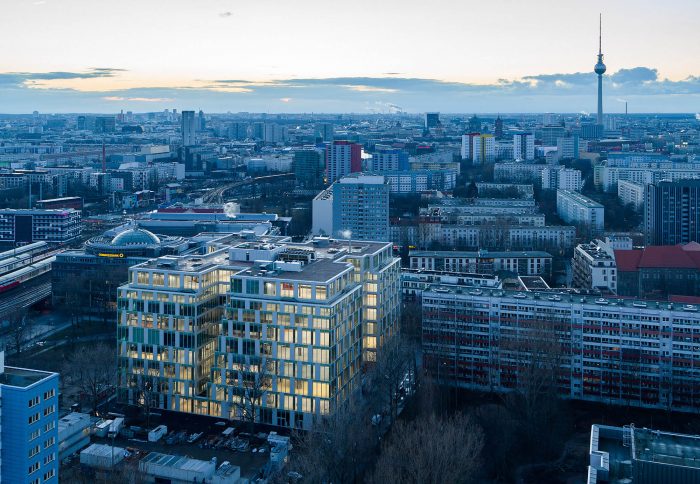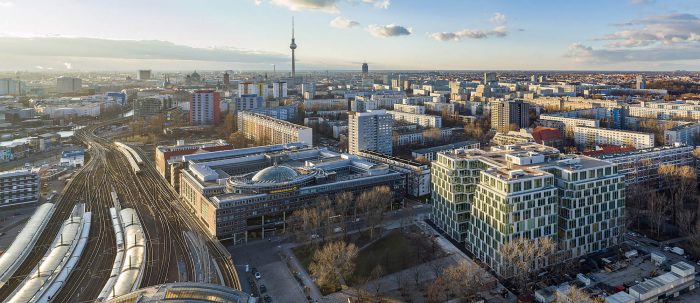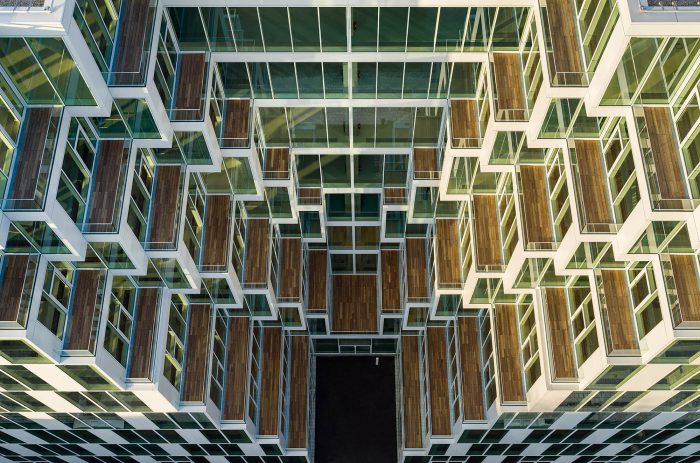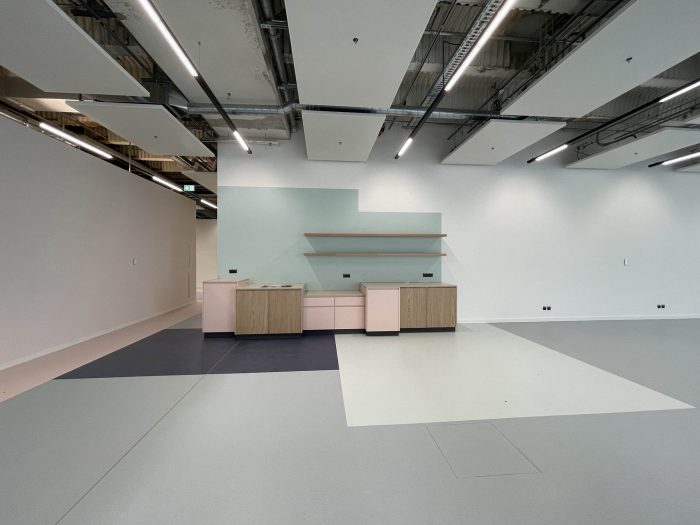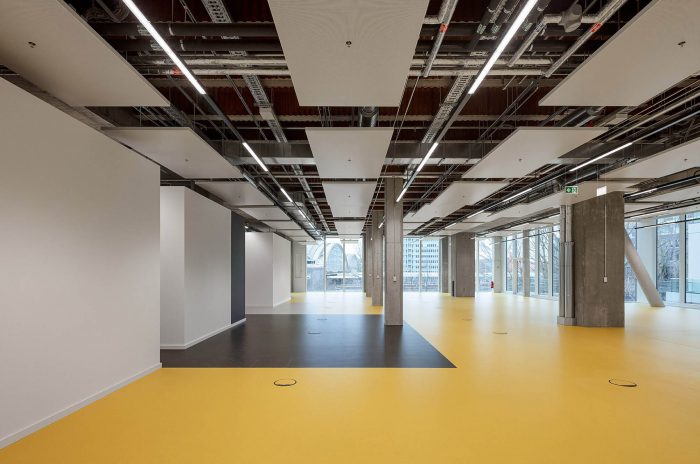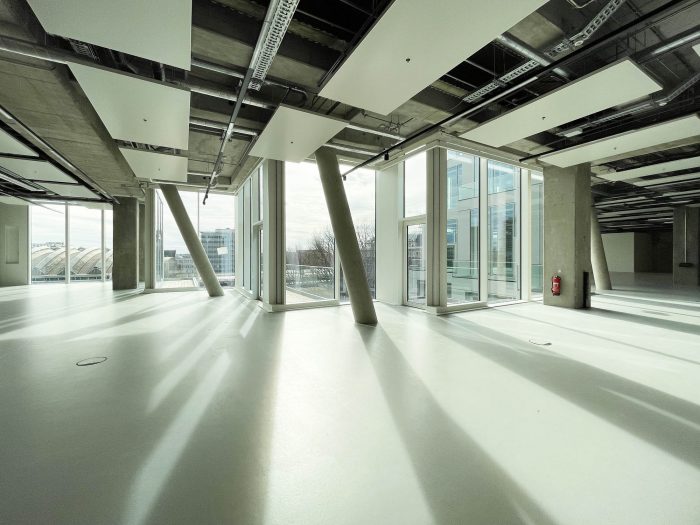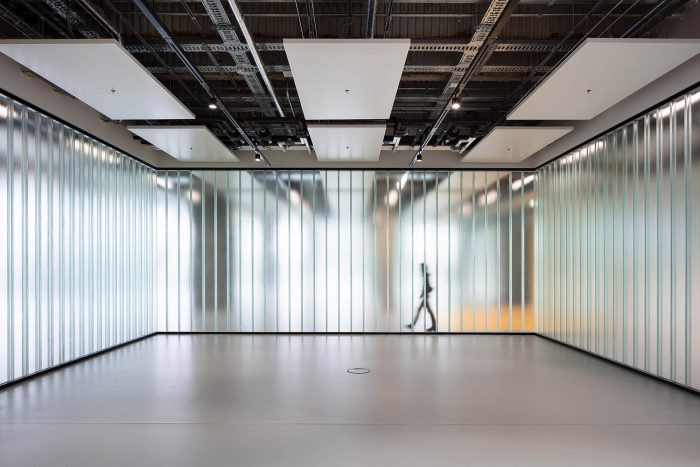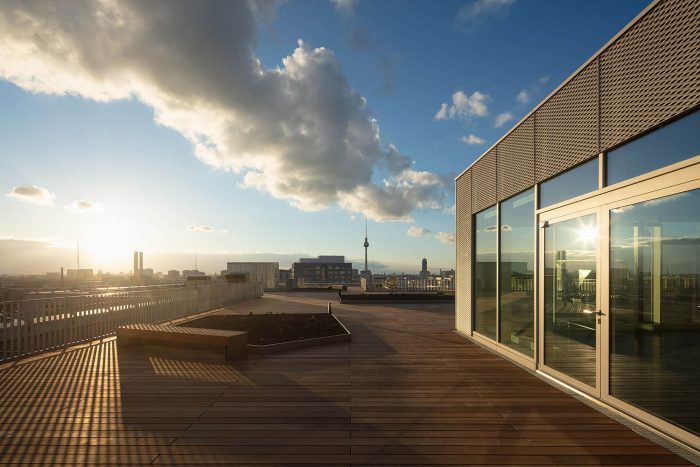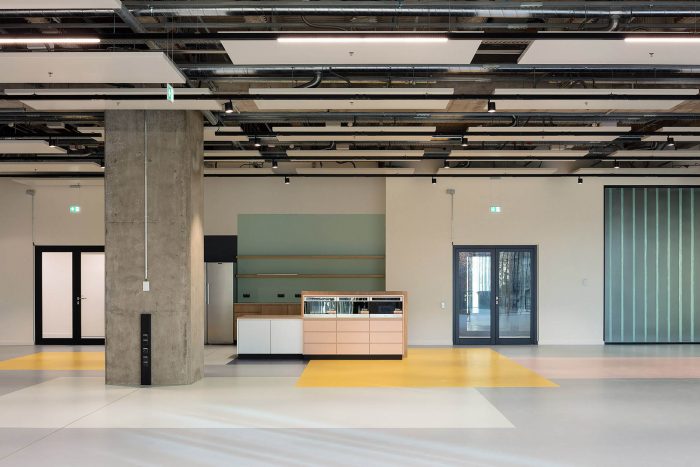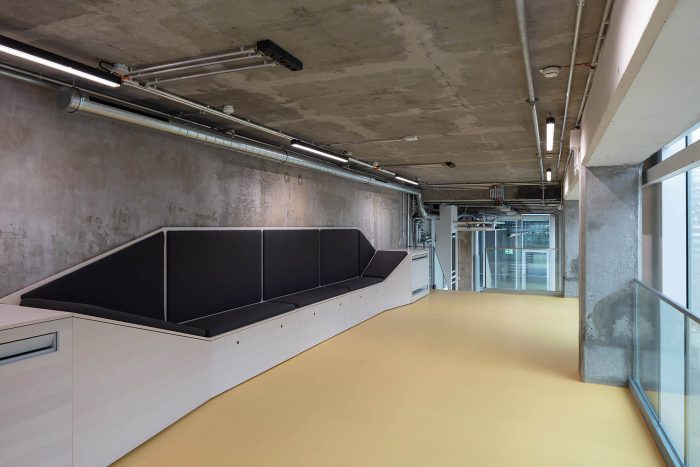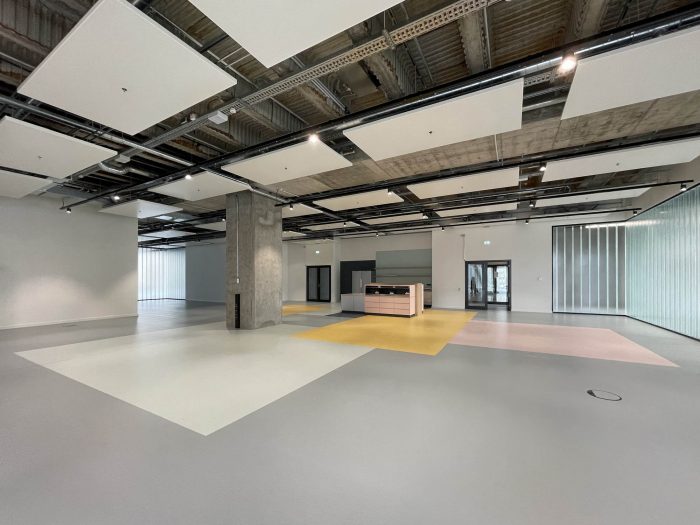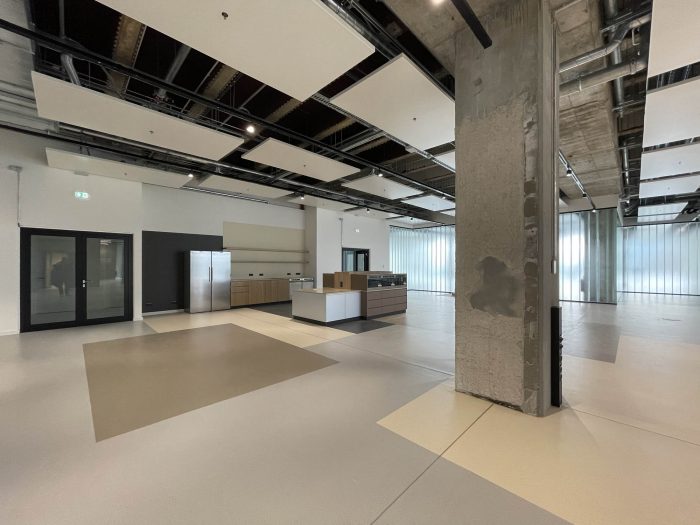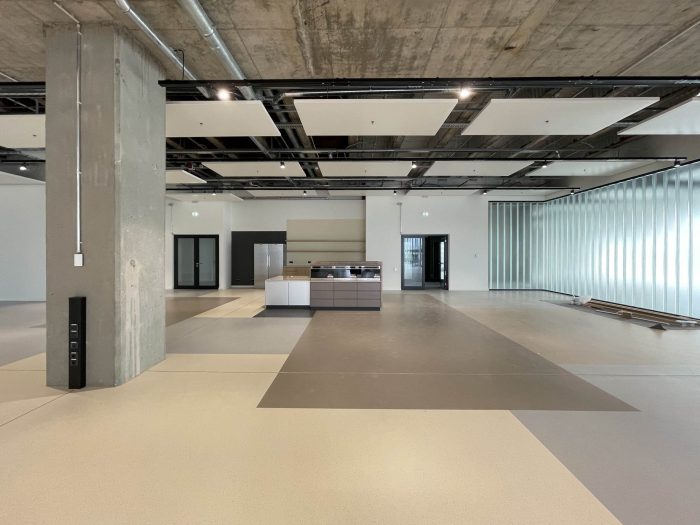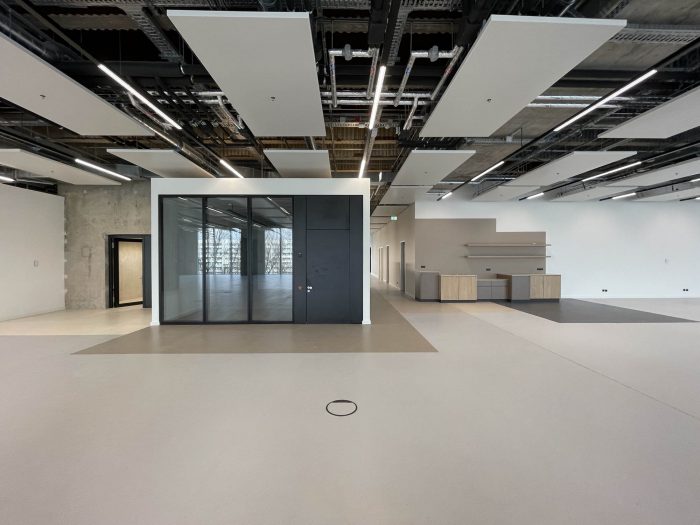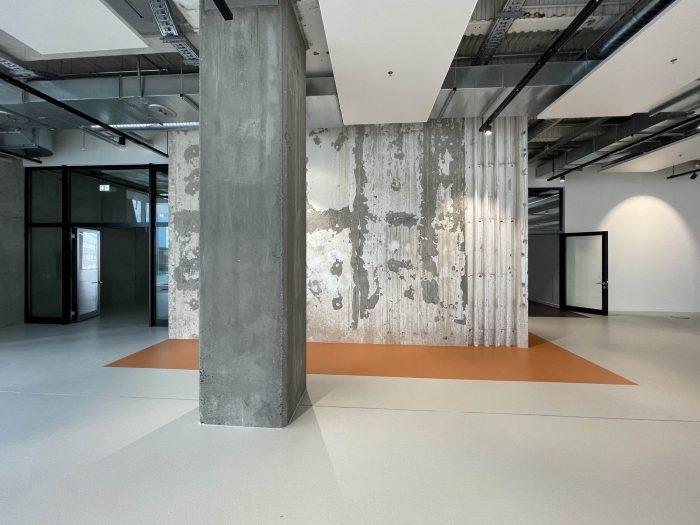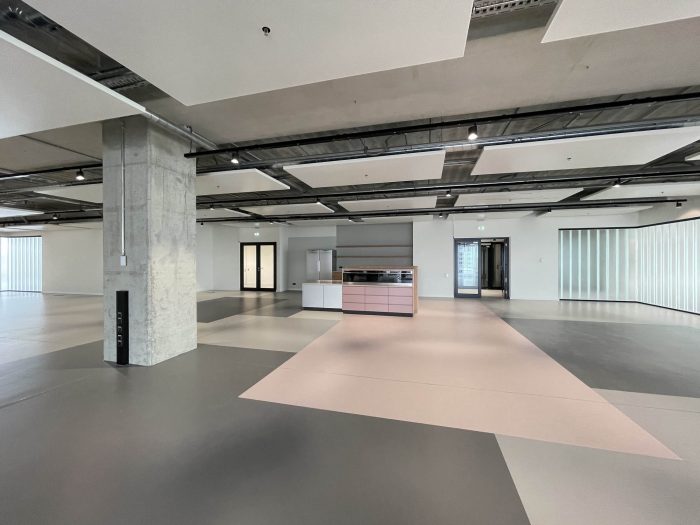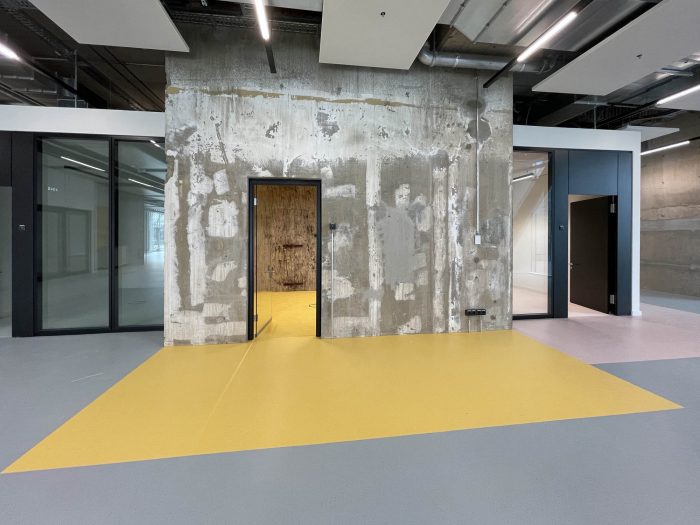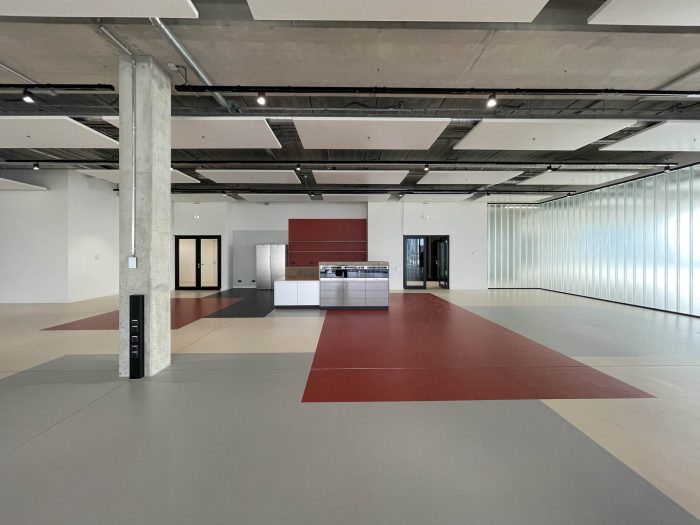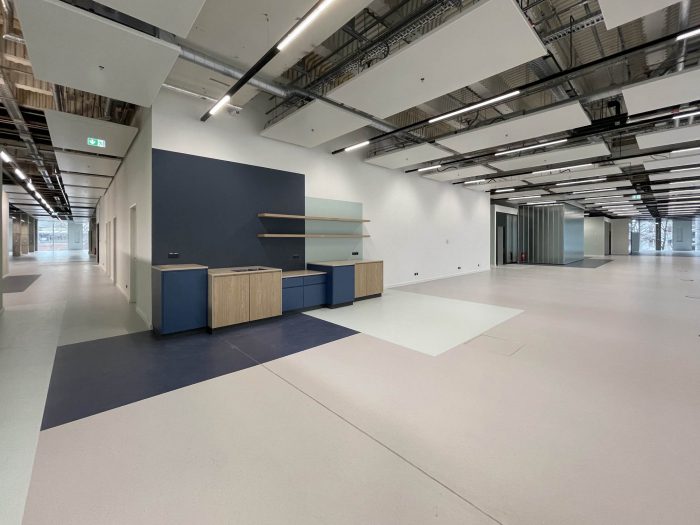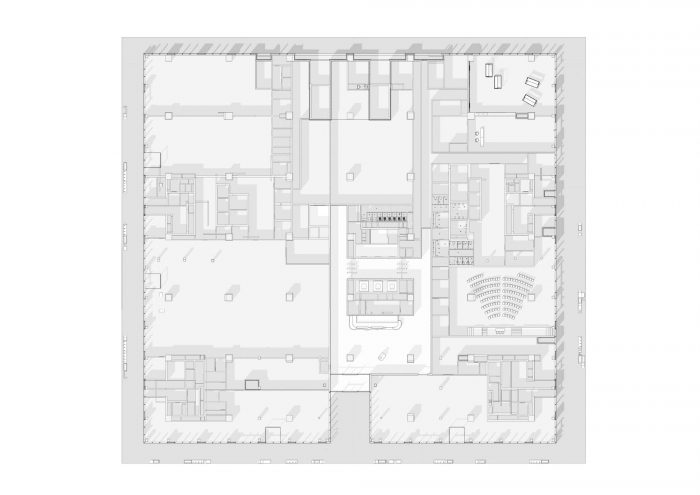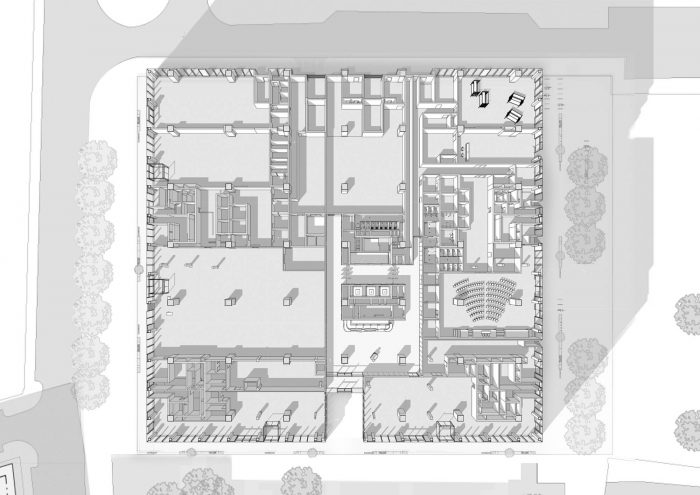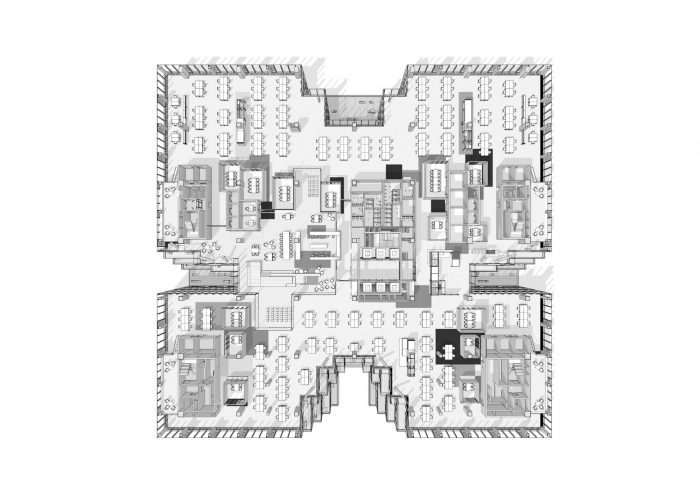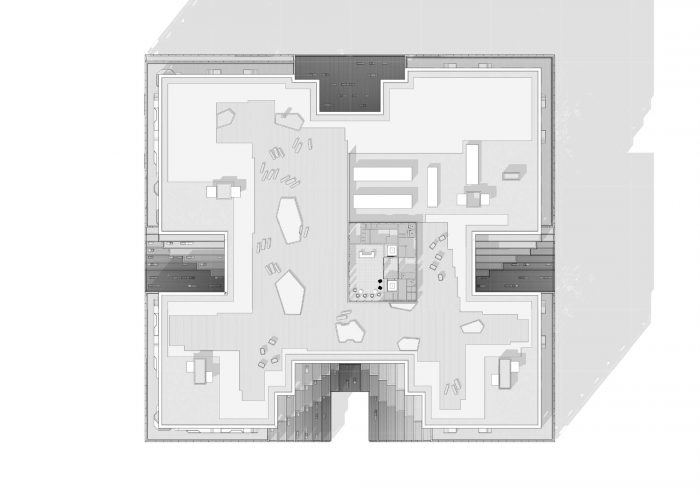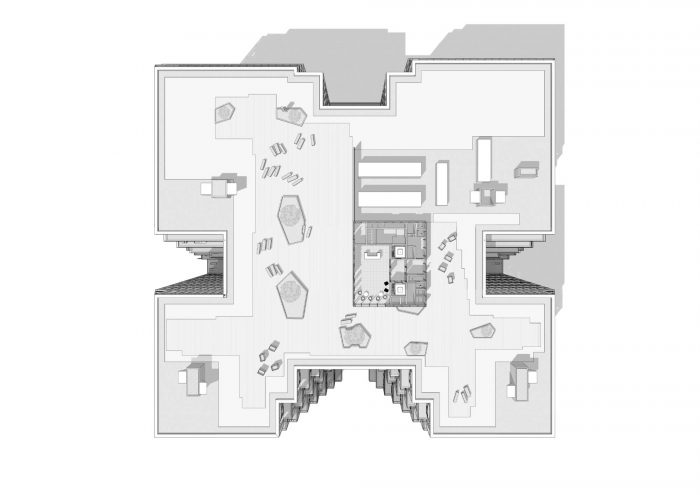2016年,JASPER ARCHITECTS赢得了由奥地利最大的私有房地产公司SIGNA组织的竞赛,对建于1979年的前民主德国 “Centrum Warenhaus “购物中心进行整体重新设计。比赛的任务是提出一个概念,将这个80米×80米的巨大方形建筑块变成数字时代的可用办公空间。
In 2016 JASPER ARCHITECTS won the competition organized by SIGNA, Austria’s largest privately-owned real estate company, for an overall redesign of the former “Centrum Warenhaus” shopping mall of the GDR, built in 1979. The competition task was to present a concept to turn this massive squared building block of 80m x 80m into usable office space for the digital era.
这家老百货公司最初被设想为一个没有对外开放的内向型建筑。这一原则必须被颠覆:内部的日光情况是一个重大挑战。JASPER ARCHITECTS在竞赛中提出的想法是在方形建筑的每一侧切割出三角形的棱镜,使室内充满自然光,并以此来放松巨大的单体几何。这些 “空隙 “完全重新定义了建筑的城市存在,在所有四面都打开了体积。
The old department store was originally conceived as an introverted building without openings to the outside. That principle had to be reversed: the interior daylight situation was a major challenge. The idea presented in the competition by JASPER ARCHITECTS was to cut triangular-shaped prisms on each side of the squared building to flood the interior with natural light and by this, loosen up the massive monolithic geometry. These “voids” redefine the building’s urban presence entirely, opening up the volume on all four sides.
“UP!”的尺寸对我们来说太熟悉了:现有的建筑看起来像布宜诺斯艾利斯典型城市街区的单体挤压。这些一直让建筑师面临着一个主要挑战:如何处理自然采光的提供?各种大小和形式的切口都在城市体块中进行,不同时期的城市规划法规也相互重叠–这些创造了复杂的城市几何形状,而这些几何形状总是从城市体块的相同方形基础上产生。对我们来说,这是我们为UP提出的建议的灵感所在!” (Martin Jasper)
“The dimensions of the UP! were all too familiar for us: the existing building looked like a monolithic extrusion of a typical city block of Buenos Aires. Those keep confronting the architects with one main challenge: How is the provision of natural lighting dealt with? Cuts of all sizes and forms are made into the urban mass and urban planning regulations of different times overlap – those create complex urban geometries that always arise from the same squared base of the city block. For us, this was an inspiration for our proposal for the UP!” (Martin Jasper)
通过在现有结构的顶部增加两层楼,再加上一个屋顶亭和广泛的屋顶露台,重新获得了被削减的楼层空间。整个现有的外墙被拆除,建筑块被缩减为混凝土骨架。 用巨大的圆锯,旧结构的空隙被切掉了。
The floor space that had been cut out was regained by two added floors on the top of the existing structure, plus a roof pavilion and extensive rooftop terrace. The entire existing facade was removed and the building block was reduced to its concrete skeleton. With huge circular saws, the voids were cut out of the old structure.
剩下的是一个由混凝土柱子组成的规则网格,每12米划分一个楼层和四个核心。建筑物的部分历史被揭开,几十年的历史在裸露的混凝土上留下了它们的光泽;旧的技术基础设施和生锈的痕迹变得明显,并被保留在原地。粗糙的工业魅力成为新时代的画布。
What remained, was a regular grid of concrete columns subdividing the floors every twelve meters and four cores. Parts of the history of the building were uncovered, decades of history left their patina on the bare concrete; old technical infrastructure and rusty traces became visible and were kept in place. The rough, industrial charm became a canvas for the new era.
外墙由两种类型的模块组成:一种是全玻璃的,另一种是带集成窗的不透明模块。它们以三比一的比例覆盖整个外墙,为阳光调节提供必要的遮挡。在空隙中,玻璃门被整合到一起,以提供通往露台的通道。在新的玻璃围护结构后面,旧的骨架展现在路人面前,而城市环境可以从各个楼层体验到完整的全景。
The facade is composed of two types of modules: a fully glazed and an opaque module with integrated casements. They cover the entire facade in a ratio of three to one, providing the necessary amount of shade for sunlight regulation. In the voids, glass doors are integrated to give access to the terraces. The old skeleton is revealed to passers-by behind the new glazed envelope, and the urban environment can be experienced as a full panorama view from all levels.
为了将广阔的楼层区域组织成不同的区域,会议室包厢和半透明的铸造玻璃墙与地板一起被战略性地分布。地板的颜色概念为分区增加了另一个层次,界定了没有物理边界的功能区。曾经以室内为重点的购物中心被重新设计为一个外向型的生产力、创造力和社区中心。
To organize the vast floor areas into different zones, meeting room boxes and translucent cast-glass walls are distributed strategically along with the floors. The flooring color concept adds another layer to the zoning, defining functional areas without physical boundaries. What was once an interior-focused shopping center has been reimagined as an outwardly focused center for productivity, creativity, and community.
Architects: JASPER ARCHITECTS
Area: 62700 m²
Year: 2021
Photographs: Nils Koenning, Hans-Georg Esch
Manufacturers: Knauf, Lindner, Siemens, APP
structural Engineer: Bollinger und Grohmann
Landscape consultant: YEWO Landscapes
Head Of Design:Martin Jasper
General Planning Lead:Henry Pudewill
Facade Design Leader:Tobias Becker
General Planning:Alexander Mendelsohn
Facade:Dennis Trutty
Planning:Lene Nettelbeck, Sara Staschiok
Planning Lead:Joerg Westphal
Project Developer:SIGNA HOLDING
Consortium General Planning Partner:Gewers Pudewill
Interior Design:Studio Aisslinger
Sustainability Consulting:Ibak
Hvac, Mep Engineer:Engineering company Meinhardt Fulst
Building Physics Consultant:Müller BBM
Fire Consultants:hhpberlin
City:Berlin
Country:Germany

